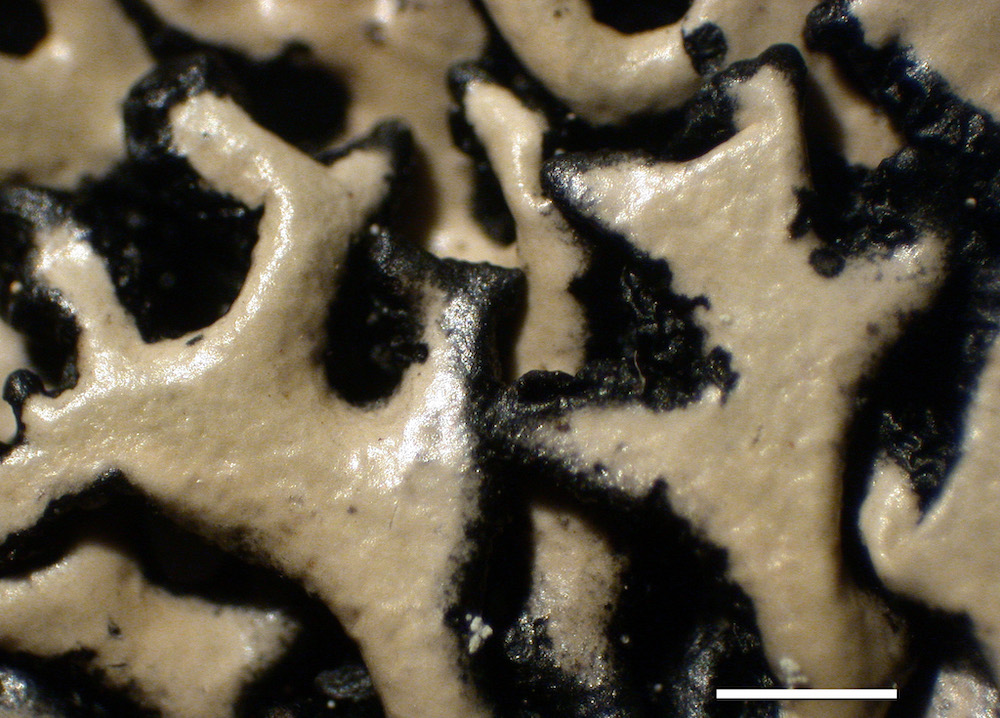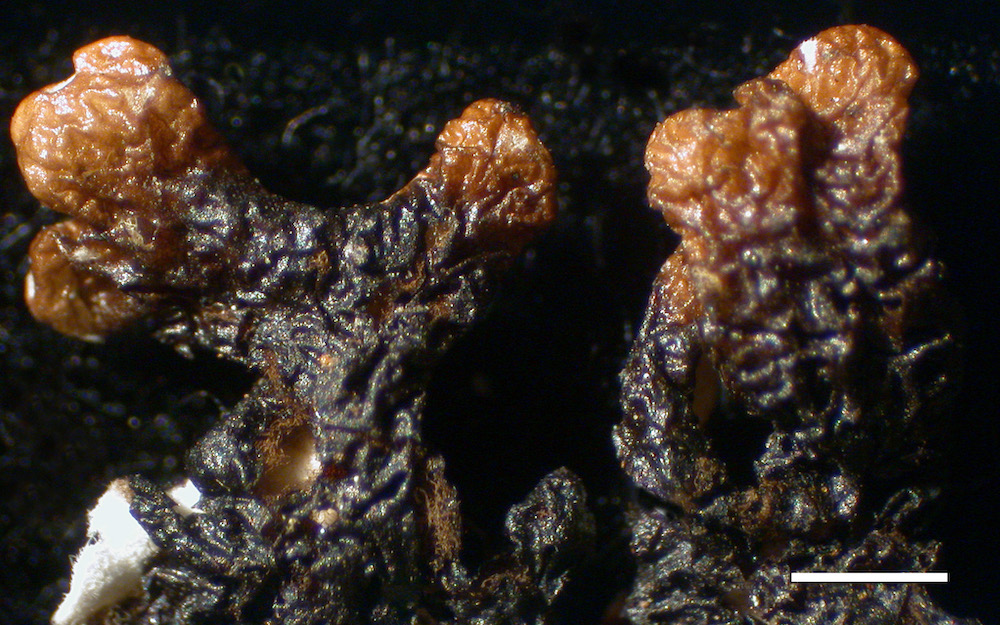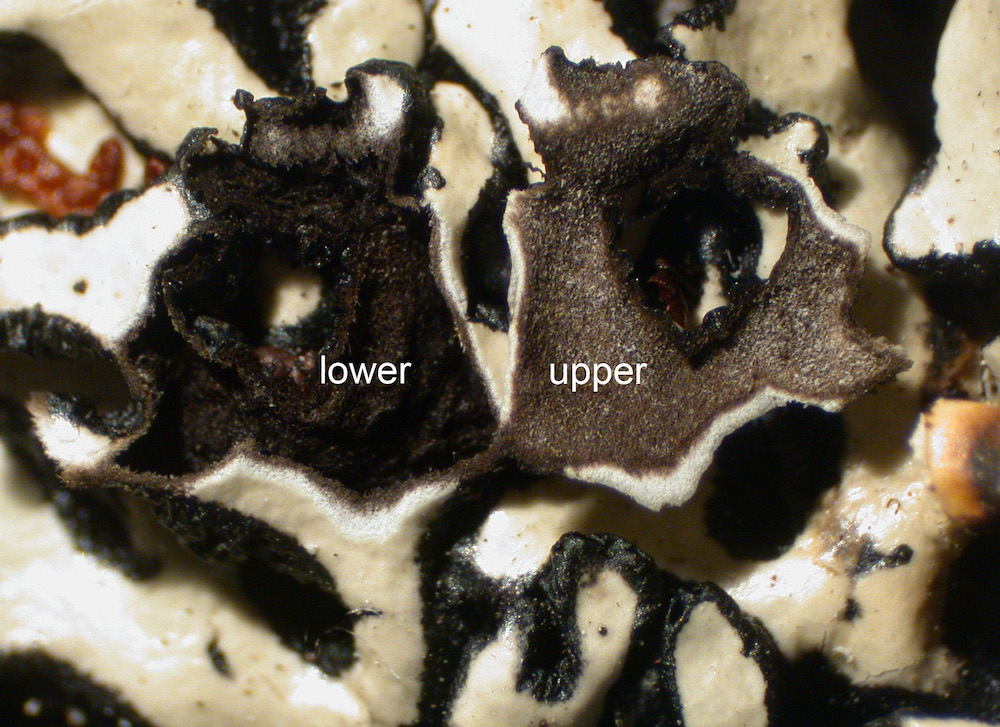Click on Characteristic name for explanation. Click on image for larger version.
Overview
| Synopsis:
| Labriform soralia beneath lobe tips, lattice-like branching, appressed, black-margined lobes that are neatly dichotomously branched; differing from H. physodes in the occasional perforations in lobe tips, absence of 3-hydroxyphysodic acid, and growth form; medulla K-, KC+ orange red, P+ orange red.
|
| Distribution:
| Archangle region (Poelt 1969) = Arkhangelsk region, Russia. This is in northwestern Russia; Sweden, Norway, Newfoundland, Nova Scotia, Maine, Tennessee, North Carolina. H. incurvoides is known from only one locality in Greenland, where it grows on branches of Betula pubescens. Elsewhere known from the Arkhangelęsk Region, Sweden, Norway, the coast of eastern Canada (Newfoundland and Nova Scotia), and the U.S.A. (Maine and the highest peaks of the Appalachian Mountains south to North Carolina).
|
| Habitat:
| sparse to dense conifer forest
|
| Range:
| Arctic, Subarctic, Alpine
|
| Other Diagnostics: | Differs from H. physodes in the absence of 3-hydroxyphysodic acid (K- rather than K+ reddish brown), a lattice-like growth form, and sparsely perforate lobe tips and axils. "The black-margined lobes and neatly dichotomous branching (Fig. 1) are often easily seen, but not completely consistent for separating H. incurvoides from H. physodes. The most definitive characters separating H. incurvoides from H. physodes are that the former has holes in many of the lobe tips and axils (Figs. 4_5) and it lacks 3-hydroxyphysodic acid. Hypogymnia physodes is never perforate, except where the lobes burst into soredia, and it always contains 3-hydroxyphysodic acid. " (McCune et al. 1995). Hypogymnia incurvoides similar to some forms of H. physodes, but is readily distinguished from that species by the presence of holes in the lobe tips and axils, black-margined lobes forming a regular lattice, and the absence of 3-hydroxyphysodic acid. This substance gives a K+ slow reddish brown reaction, which is consistently seen in H. physodes but not H. incurvoides. Although the soredia are similar in form to H. physodes, DNA evidence shows that H. incurvoides is most closely related to the North American endemic H. krogiae.
| | Substrate Notes: | On conifers (Abies, Larix, Picea) and hardwoos (Betula), rarely on rock
| | Abundance in North America: | Locally common
| | Substrate: | Typically
| | Host: | Betula, Abies, Larix, Picea
| | On Rock: | Rarely
| | On Moss/Detritus/Sod: | Never
| | Authority: | Rass.
| | References: | Rassadina (1967), McCune et al. (1997, 2006)
| | Synonymy: | None
|
|
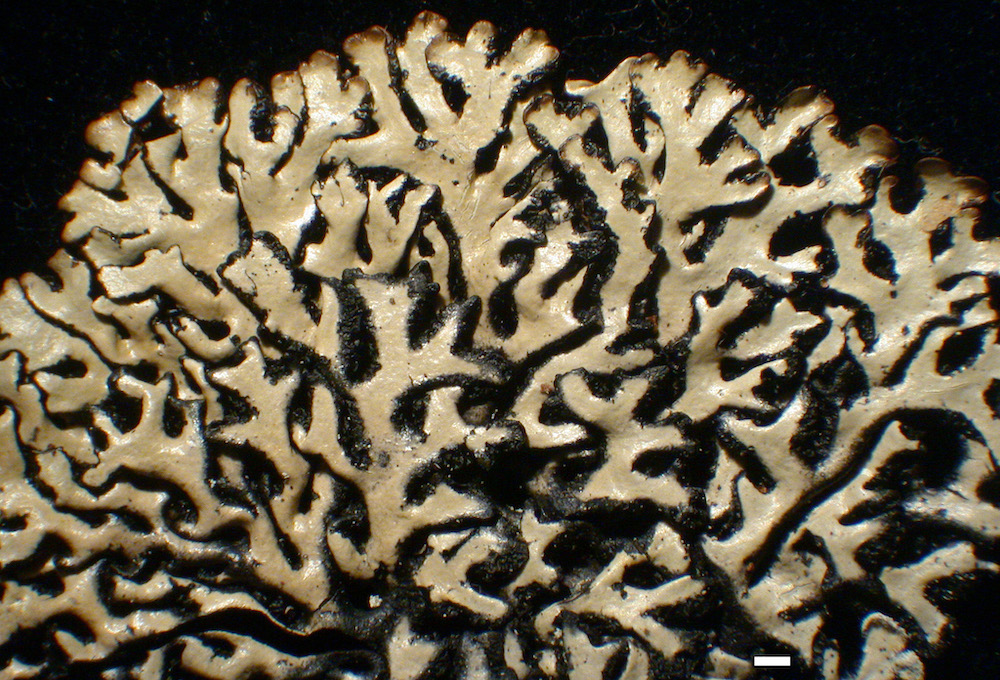
Habit
|
Reproductive Structures
|
|
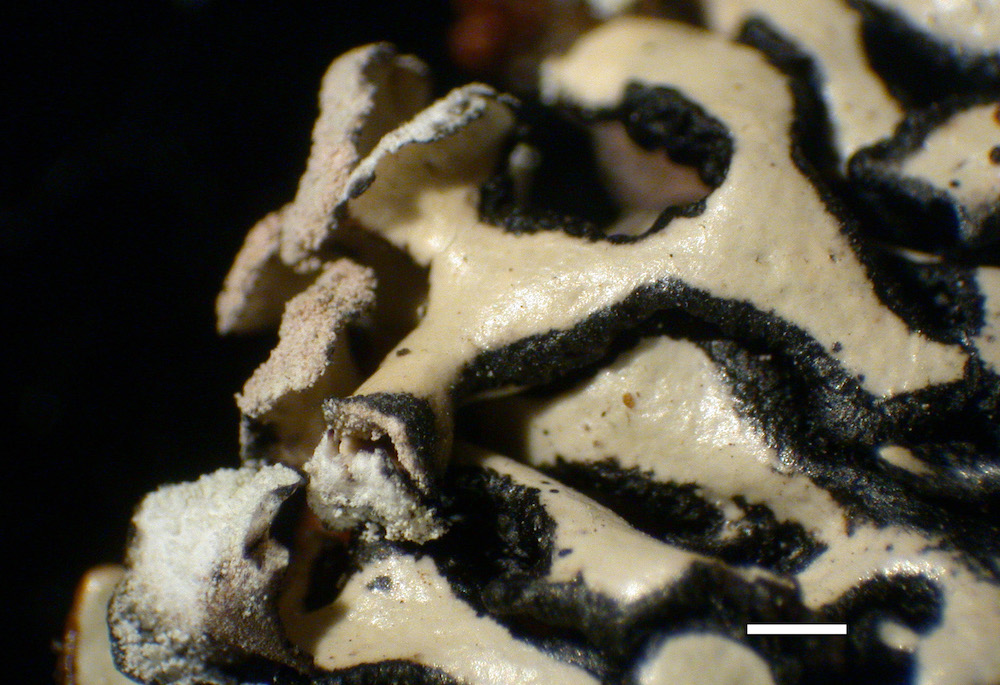
Soredia
|
Chemistry
|
|

K- reaction
|

